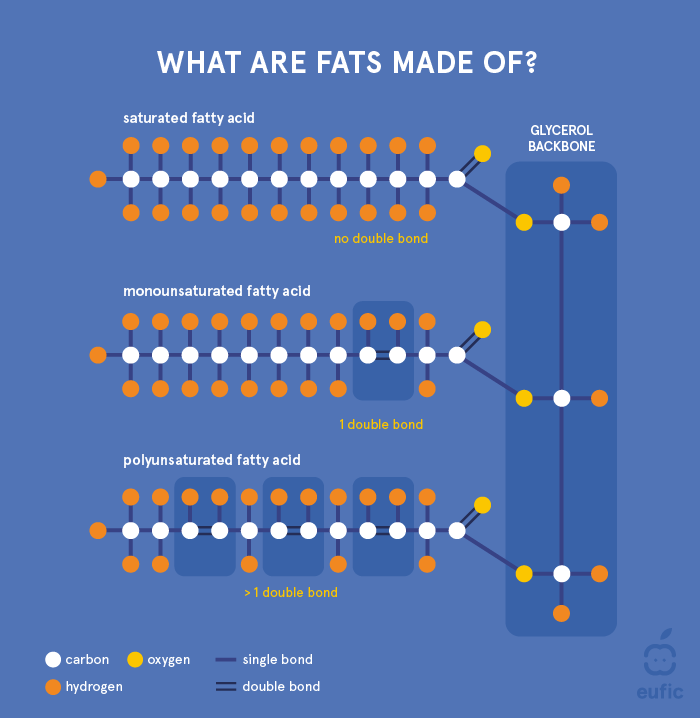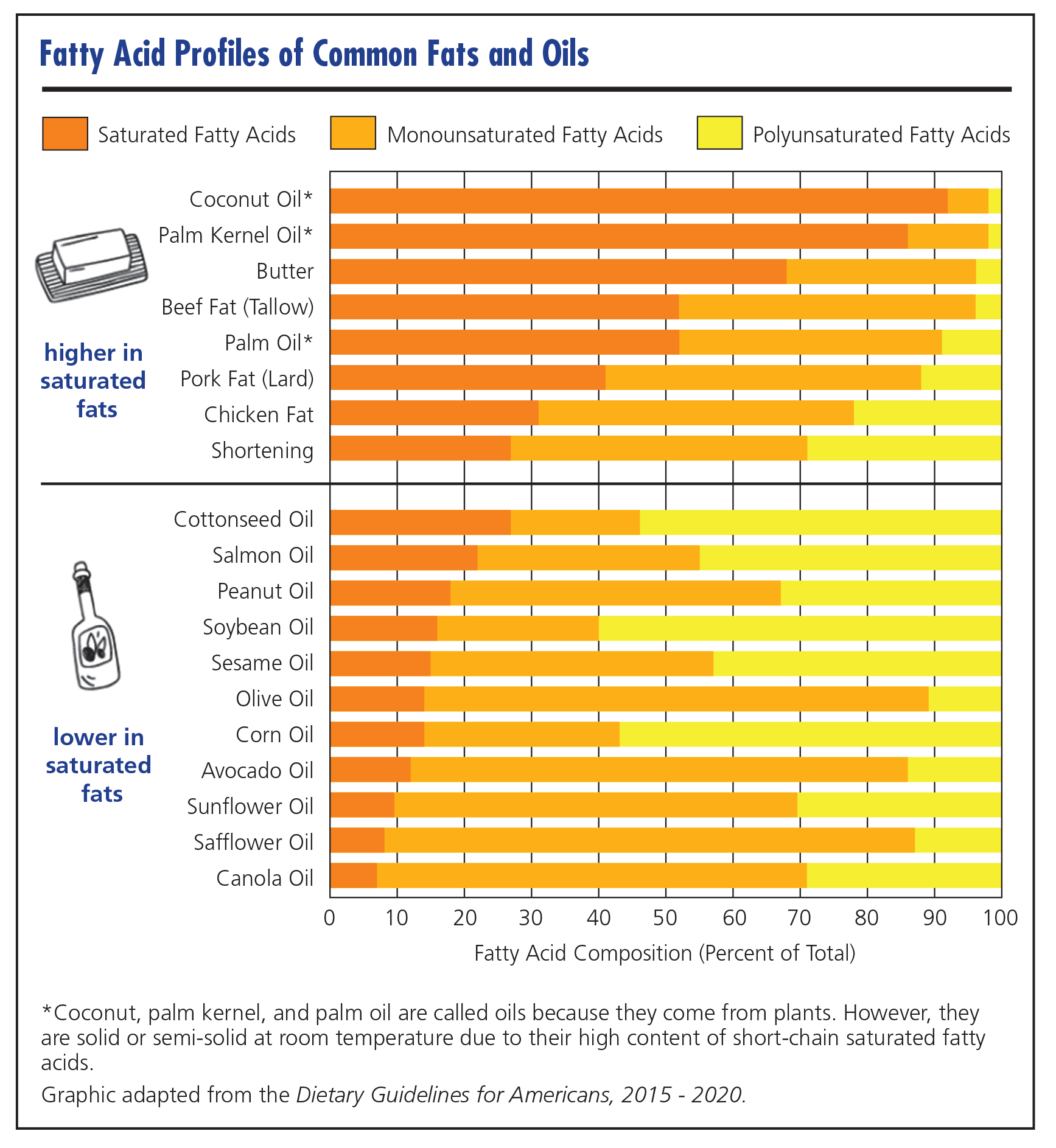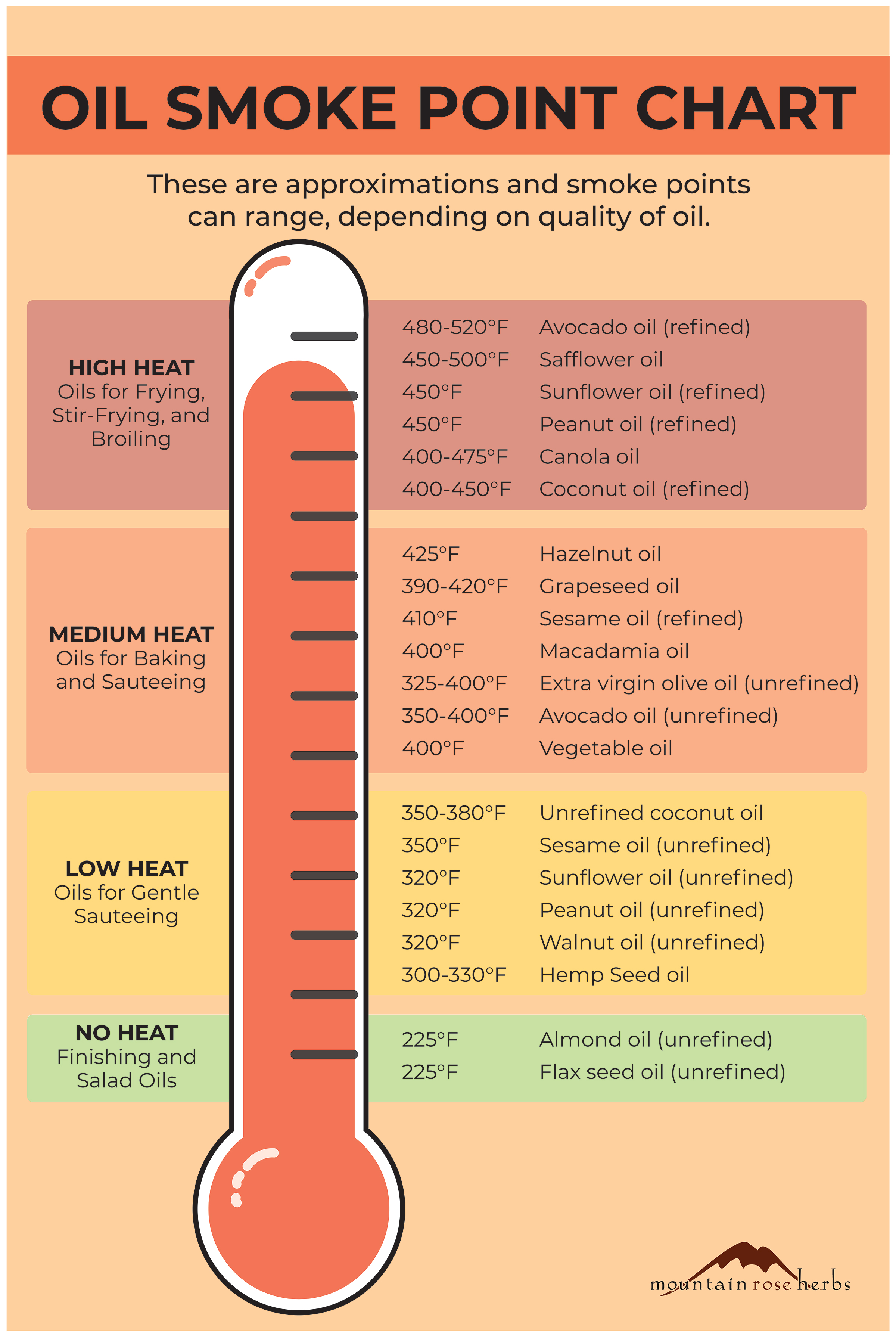
Being an avid cook, I’ve recently become more conscious of what goes into my food and body. Among all the ingredients, oil takes the spotlight as the most used component in all forms of cooking. We’ve all probably wondered at some point about the best cooking oil — some swear by olive oil, while others advocate for mustard or even ghee (clarified butter). However, as with many things, there’s no one-size-fits-all answer.
Let’s start by understanding what is fatty acid. Fatty acid is a carboxylic acid (an organic acid with a carboxyl group, R−COOH) with an aliphatic chain (straight chain compounds). Fat is derived from fatty acid. The type of fat is defined by the bond between carbon atoms. If the atoms are connected by a single bond, it is called saturated fat whereas if they are connected by a double bond, it is called unsaturated fat. Saturated fats are solid at room temperature, while unsaturated fats are liquid and considered healthier because they are less likely to clog arteries.

Unsaturated fats can improve blood cholesterol levels, ease inflammation, stabilize heart rhythms, and play various other positive roles. These fats, decreasing bad cholesterol (LDL) and increasing good cholesterol (HDL), come in two types: monounsaturated and polyunsaturated.1
Monounsaturated fats, characterized by a single unsaturated (double) bond, have been shown to reduce the risk of cardiovascular disease 2 and mortality.3 They are found in high concentrations in:
Polyunsaturated fats, with more than one unsaturated bond, are essential for proper bodily functions. They help with blood clotting and muscle movement. They are further categorized into omega-3 and omega-6 fatty acids. Omega-3 fatty acids can help prevent heart disease and stroke, may help control lupus, eczema, and rheumatoid arthritis, and may play protective roles in cancer and other conditions4. Omega-6 fatty acids also improve heart health. There are studies on the effect of omega-6 on omega-3 fats which suggest omega-6 might reduce anti-inflammatory effects of omega-3 fats but as per American Heart Association (AHA), there is no scientific evidence to support this claim and more research is needed5.
Omega-3 olyunsaturated fats are found in high concentrations in:
Omega-6 polyunsaturated fats are found in high concentrations in:
Considered the “bad” fats, saturated fats increase bad cholesterol (LDL) and the risk of heart disease.6 Experts disagree whether it is important to limit saturated fats but AHA suggests limiting them to less than 6% of daily calories. Trans fats, a type of saturated fat found in fried foods and processed snacks, should definitely be avoided. Sources of saturated fat include:
Understanding the distinction between “good” and “bad” fats guides the choice of cooking oil. The image below illustrates the composition of saturated, monounsaturated, and polyunsaturated fats in various oils.

It’s evident that oils with high saturated fat content, like coconut and palm oil, should be avoided. Healthier options include olive, avocado, mustard, and safflower oil. However, this is not the whole story. The smoke point of an oil is also crucial in selecting the right one for cooking.
Note: Mustard oil is missing from the image above. Its fat composition is 11% saturated fat, 59% monounsaturated fat, and 21% polyunsaturated fat.7
Smoke point is the temperature at which an oil starts to burn and smoke. Following is the general recommended smoke point for different types of cooking:
| Cooking type | Smoke point |
|---|---|
| Pan frying | 120°C (248°F) |
| Deep frying | 160-180°C (320-356°F) |
| Oven baking | 180°C (356°F) |
The below table shows the smoke point of different oils:

Note: The smoke point of mustard oil is 250°C (480°F).
However, studies show that a high smoke point does not correspond with an oil’s stability under heat. For instance, sunflower oil, despite its high smoke point, released the highest amount of aldehydes into cooking fumes compared to other plant-based oils in certain frying techniques.8
Several other factors may influence your choice of oil. For instance, in India, mustard oil is widely used, but it’s banned in the US by the FDA due to its erucic acid content, linked to myocardial lipidosis in rodents. Nevertheless, other countries have established upper limits for tolerable mustard oil intake.
The best oil for cooking is one with low saturated fat content, high unsaturated fat content, and a smoke point suitable for your cooking style. For high-temperature Indian cooking, I prefer avocado oil. However, it might not be the best choice for everyone, considering factors like cost and availability. Mustard or canola oil can be good alternatives—affordable and with a high smoke point. For most other types of cooking, extra virgin olive oil is a great choice.